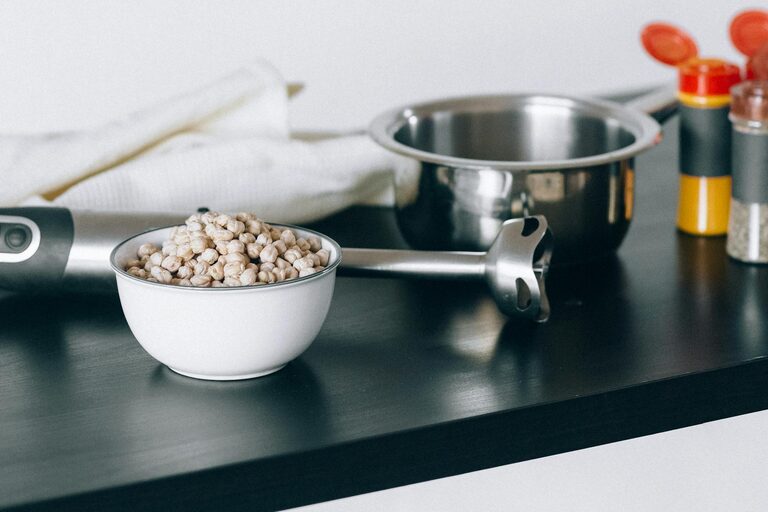How to Create a Simple Weekly Meal Plan for Stress-Free Cooking

Planning your meals for the week doesn’t have to be complicated or time-consuming. With a simple weekly meal plan, you can streamline your grocery shopping, reduce food waste, save money, and enjoy home-cooked meals every day. In this post, we’ll guide you through straightforward steps to create a meal plan that fits your lifestyle, tastes, and schedule.
Why Create a Weekly Meal Plan?
Before diving into the how, it’s helpful to understand the benefits:
– Saves time: Knowing what you’ll cook each day removes guesswork and multiple trips to the store.
– Reduces stress: With a plan in place, you can avoid last-minute scrambles and unhealthy takeout.
– Supports healthy eating: Planning meals allows you to include balanced nutrients and control portions.
– Lowers food waste: Buying only what you need helps prevent unused food from spoiling.
– Saves money: Strategic shopping based on your plan helps you avoid impulse purchases.
Ready to get started? Let’s break down the process.
Step 1: Assess Your Week Ahead
Look at your calendar and note any busy days, social events, or plans that may affect cooking time.
– Identify time constraints: For example, a late workday might call for a quick dinner.
– Plan for leftovers: If you have a packed day, cooking extra one night can provide an easy lunch or dinner the next.
– Consider your household: Factor in different schedules, preferences, or dietary needs.
Step 2: Decide on Meals to Plan
You can choose to plan all meals — breakfasts, lunches, and dinners — or just focus on the main ones.
– Start small: Beginners may want to start with dinner only.
– Include snacks or treats: If it helps keep hunger at bay or limits impulsive eating.
– Think about balance: Aim for a mix of proteins, vegetables, grains, and fruits in your meals.
Step 3: Gather Your Recipes and Ideas
Collect your favorite recipes or explore new ones that are easy and nourishing.
– Use trusted resources: Recipe books, websites, or apps can provide inspiration.
– Focus on simplicity: Choose meals with few ingredients or minimal prep time.
– Batch cookable dishes: Soups, stews, casseroles, or grain bowls work well for cooking ahead.
Step 4: Create Your Meal Template
Design a simple table or chart for the week to organize meals.
| Day | Breakfast | Lunch | Dinner |
|———–|——————-|———————|———————|
| Monday | | | |
| Tuesday | | | |
| Wednesday | | | |
| Thursday | | | |
| Friday | | | |
| Saturday | | | |
| Sunday | | | |
Fill in meals according to your recipes and schedule.
Step 5: Make Your Shopping List
Go through your meal plan and list all needed ingredients.
– Check your pantry and fridge: Avoid buying items you already have.
– Organize your list by store sections: This saves time while shopping.
– Include quantities: Especially for bulk items or perishables.
– Consider substitutions: Flexible ingredients can help if something is unavailable.
Step 6: Execute Your Plan
Shop according to your list and prepare meals as planned.
– Prep ahead: Wash and chop vegetables or cook grains in advance to save time.
– Cook in batches: Prepare larger portions to freeze or refrigerate for future meals.
– Stay flexible: If plans change, swap meals within the week to avoid waste.
Additional Tips for Successful Meal Planning
– Theme your days: For example, Meatless Monday or Taco Tuesday to keep planning fun and simple.
– Use leftovers creatively: Transform last night’s dinner into a new meal like a salad or wrap.
– Involve the family: Let others suggest meals or help with prep to share the workload.
– Keep a meal planning journal: Track what works and adjust recipes or portions accordingly.
– Stay realistic: Don’t overplan or make meals too complicated.
Sample Simple Weekly Meal Plan
Here’s a quick example to get you started:
| Day | Breakfast | Lunch | Dinner |
|———–|———————|————————-|————————|
| Monday | Oatmeal with fruit | Turkey sandwich | Grilled chicken with veggies |
| Tuesday | Yogurt and nuts | Leftover chicken salad | Spaghetti with marinara sauce |
| Wednesday | Smoothie bowl | Quinoa and roasted veggies | Stir-fry tofu and rice |
| Thursday | Scrambled eggs | Soup and bread | Baked salmon and salad |
| Friday | Toast with avocado | Leftover stir-fry | Homemade pizza |
| Saturday | Pancakes | Garden salad | Slow cooker chili |
| Sunday | Fruit and granola | Pasta salad | Roast chicken and potatoes |
Final Thoughts
Creating a simple weekly meal plan is a practical way to improve your eating habits and reduce daily stress. Start small, stay flexible, and make adjustments as you learn what works best for you. Over time, meal planning can become a rewarding part of your routine, helping you enjoy wholesome meals with less hassle.
Happy planning and cooking!
